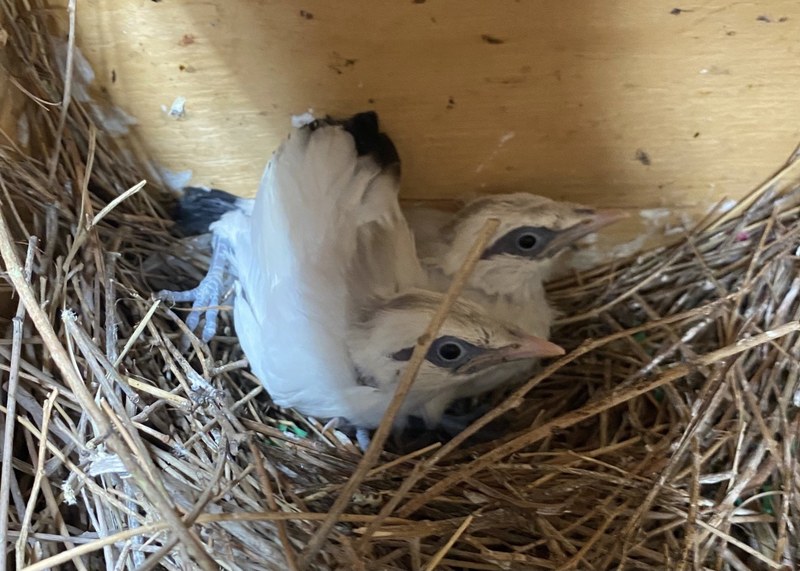
ABQ BioPark Welcomes Critically Endangered Bali Myna Chicks
The chicks are the first of the species hatched at the ABQ BioPark in 40 years.
In February of this year we announced that we had introduced two Bali mynas to each other, with the hopes of them becoming a mating pair. Bali myna are a Critically Endangered species of starling from the island of Bali, a province of Indonesia. It's believed there are only 50-60 mature individuals remaining in the wild, which is actually an improvement from 2001's all-time low of only 6. This progress has been made possible by international efforts to reduce poaching coupled with regular releases of birds hatched in human care. This breeding success is a valuable contribution to Bali myna conservation.
On recommendation from the Bali Myna Species Survival Plan, the ABQ BioPark welcomed a two-year-old female named Masa from Atlanta Zoo in late 2023 as a companion for male Pozole, 6, who came here from St. Louis Zoo in November 2019. Our bird care team worked hard on their habitat to create the perfect atmosphere in the hopes that Pozole and Masa would find 'true love', as Bali myna are known to form long-term monogamous pairs. The two were soon observed exhibiting courtship behaviors and nest-building and we began crossing our fingers.
Happily, eggs were discovered in their nest in May! The eggs remained in the nest to be incubated by the pair and two chicks successfully hatched on May 25, 2024. Our care staff has been keeping an eye on the young family, but first-time parents Pozole and Masa have been doing an amazing job! Both parents have active roles in chick-rearing and work as a team. The females tend to the majority of the incubation and brooding, while the males will bring nest material and diet items to the chicks and the nest. He can still be observed filling his beak up with bugs and fruit to feed the chicks. Baby birds grow fast: they are already out of the nest box and can be seen exploring with their parents in our Birds of the Islands habitats. They will remain with their parents for another couple of weeks until they reach the age when they would normally go their separate ways in the wild, at which point they will move into their own space.
